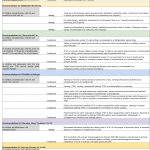A group led by Sarah Ringold, MD, MS, assistant professor of rheumatology at Seattle Children’s Hospital, has developed a new guideline intended to provide recommendations for the treatment and monitoring of children with juvenile idiopathic arthritis (JIA) manifesting as non-systemic polyarthritis, sacroiliitis or enthesitis.1,2
Key Updates
The new recommendations appear in both Arthritis & Rheumatology and Arthritis Care & Research, alongside a new guideline for JIA-associated uveitis.3,4 They are intended to make decision making less complex for physicians, caregivers and patients, and provide updates to recommendations published by the ACR in 2011, reflecting new data and therapeutic options.
One example: “NSAID [non-steroidal anti-inflammatory drug] monotherapy is no longer recommended given the established benefits of early DMARD [non-biologic and biologic disease-modifying anti-rheumatic drug] treatment,” says Dr. Ringold.
The updates take advantage of the Grading of Recommendations Assessment, Development and Evaluation (GRADE), rigorous methodology that involves a more transparent decision-making process relative to methodologies previously used for ACR JIA guidelines. GRADE balances harms and benefits, provides well-defined criteria for translating evidence to recommendations, and incorporates patient preferences and values.
Recommendation Process
The process involved numerous physicians, patients and the parents of children with JIA. Because most of the supporting evidence available to the team was of low or very low quality, according to GRADE standards, the recommendations explicitly call for shared decision making between providers and parents.
“The inclusion of patient and parent preferences unquestionably adds value to the new recommendations because many of the recommendations are based on limited evidence,” says pediatric rheumatologist and guideline co-author, Tim Beukelman, MD, MSCE.
The new recommendations should also help direct future research agendas and emphasize the ongoing need for high-quality data regarding treatment effectiveness, particularly to fill gaps in the data, says Dr. Ringold. Due to these gaps, the new guideline does not address a number of treatment questions providers face, including the management of inactive disease in JIA and the tapering or withdrawal of medications.
However, it offers 39 recommendations: eight strong and 31 conditional, including specific recommendations for polyarthritis (five joints or more) that involve general medication use, adjunctive therapies and good disease control. Sacroiliitis and enthesitis recommendations are focused on initial and adjunctive therapies.
Strong recommendations are those for which the guideline voting panel was confident the benefits of the action outweigh the risks and would apply to most or all patients. Conditional recommendations are those for which the voting panel had less confidence in the risk–benefit assessment, with a preference for shared decision making. The team also considered outcomes, such as pain, disease activity, quality of life and joint damage.


